IT BEGAN with a fragmented montage of Dior’s past. Christian Dior, Yves Saint Laurent, Marc Bohan, Gianfranco Ferré, John Galliano, Bill Gaytten, Raf Simons, and Maria Grazia Chiuri: all were referenced, praised, and most importantly, remembered.
Unlike many who take on the daunting task of creatively directing an entire House – especially one whose past is cemented in the upper echelons of fashion – Jonathan Anderson did not approach his debut collection with a desire to clean the slate.
Rather, he understood the importance of each chapter, writing clearly in the show notes, “an embrace of beauty has enduringly taken shape in the House, no matter the moment.” To design for Dior, he needed to understand the language of the past in order to write his own chapter.
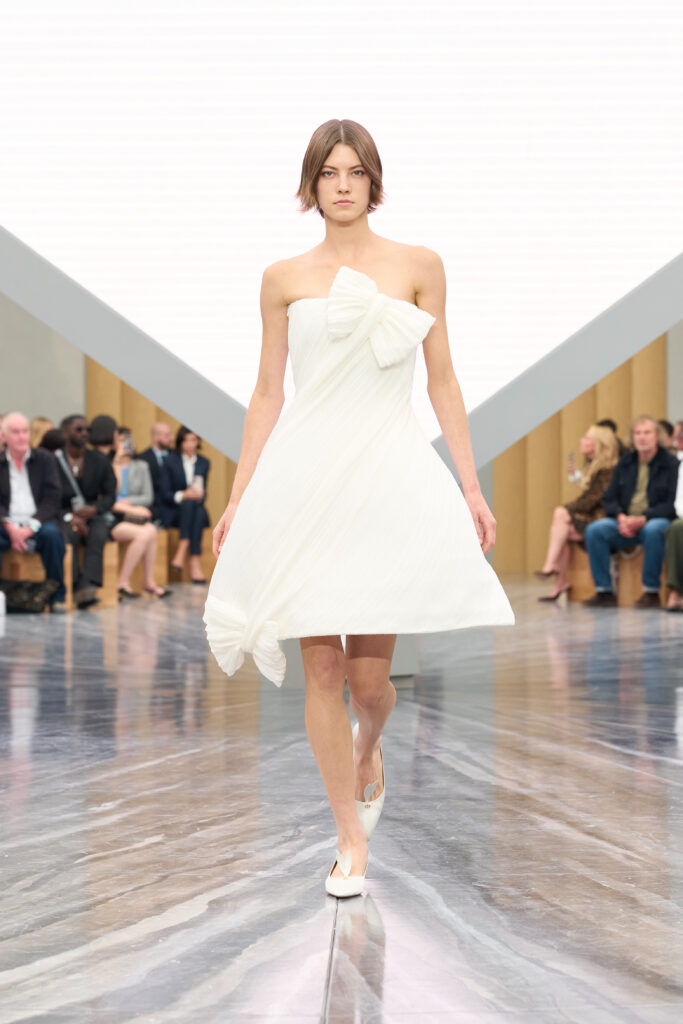
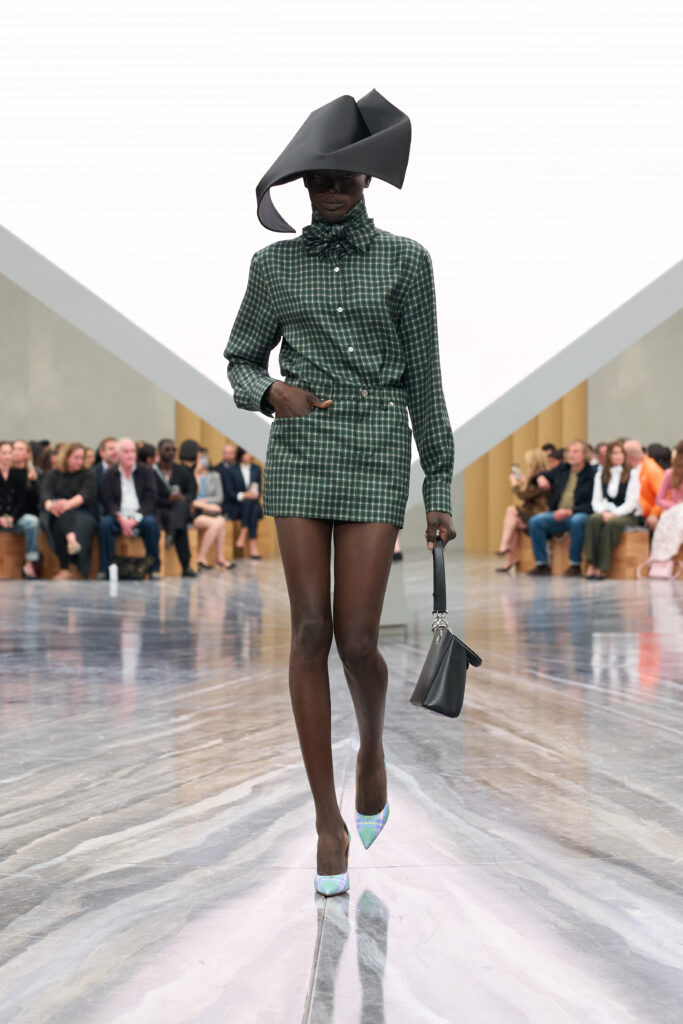
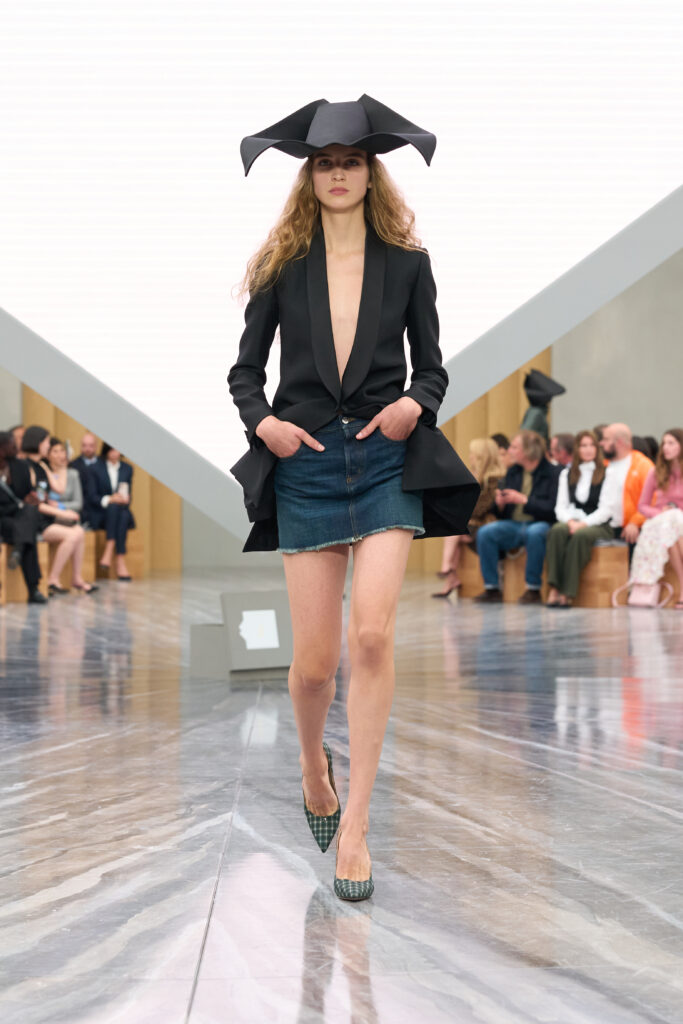
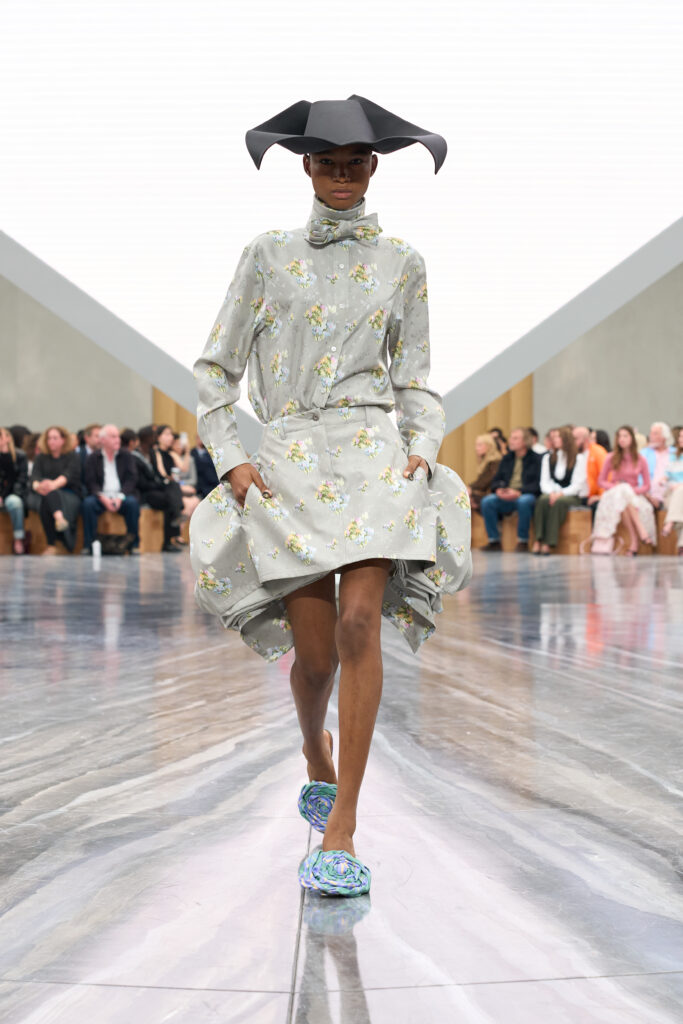
Earlier this summer, we were given the first taste of his Dior during men’s fashion week – a collection that felt like a youthful declaration of style. Would the same be said of his womenswear? Simply, yes. In true Anderson fashion, he threaded his knack for visual tension throughout the 74 looks, interchanging opposing sides: old versus new, structure against softness, and historical references with reinvention.
The Bar Jacket was a clear starting point. Screwed in as a foundational silhouette to the Dior identity (a central piece of the 1947 “New Look”), the Irish designer reworked its proportions, cropping them and sometimes lifting the peplum toward the breasts, and even pairing it with a mini skirt. The latter accompaniment was continually reinvented, arriving in canvas and either knotted at the front, echoing FW1954, or layered at the back, mimicking the famous 1948 “Delft” gown.
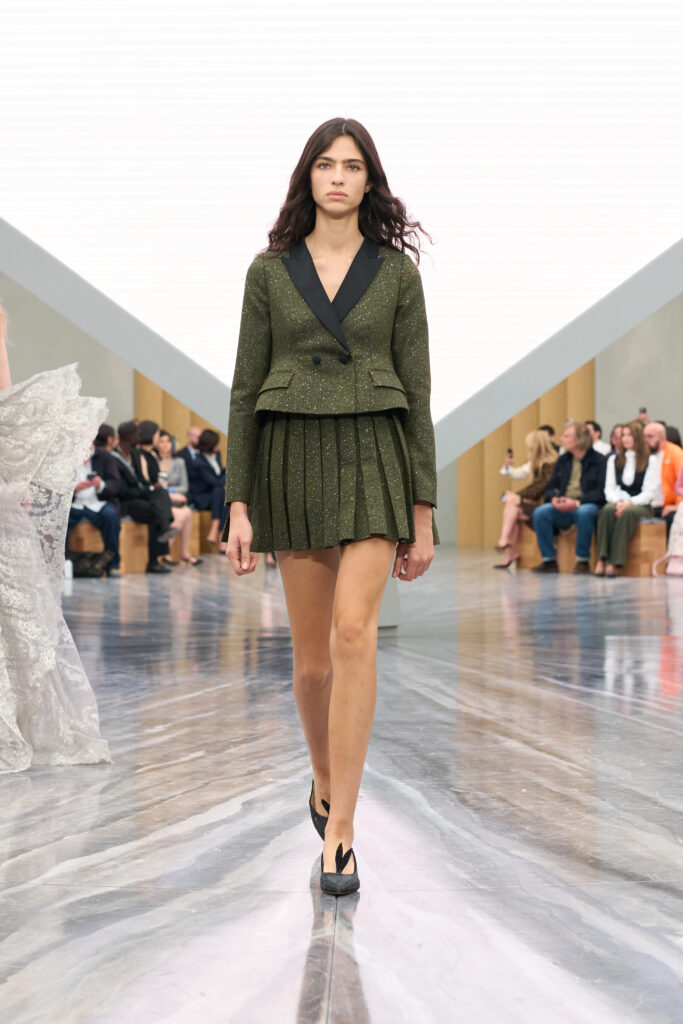
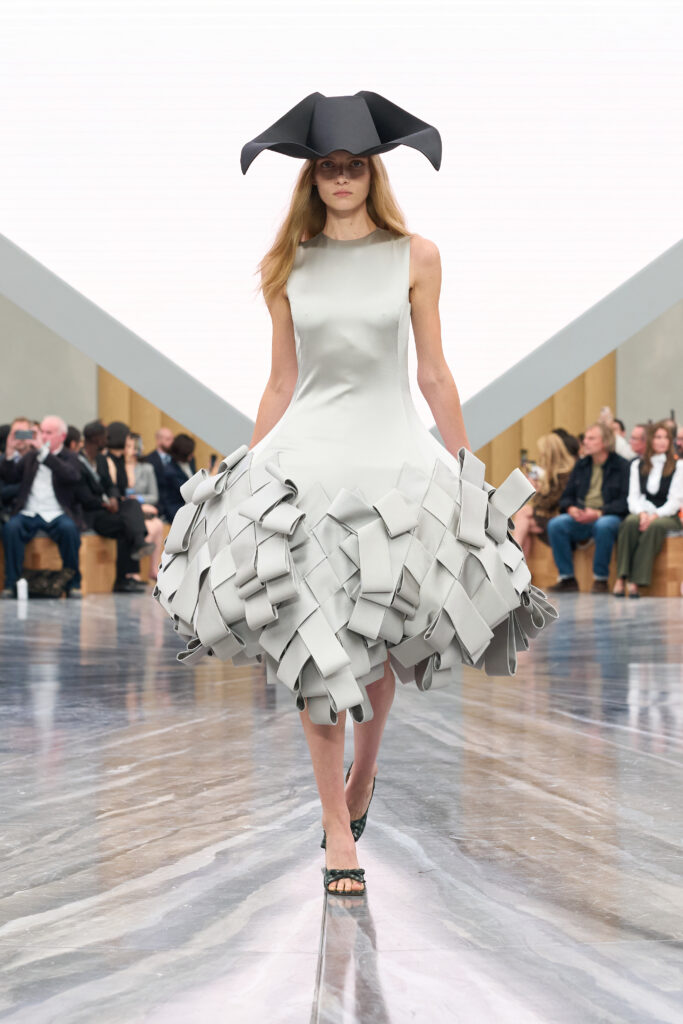
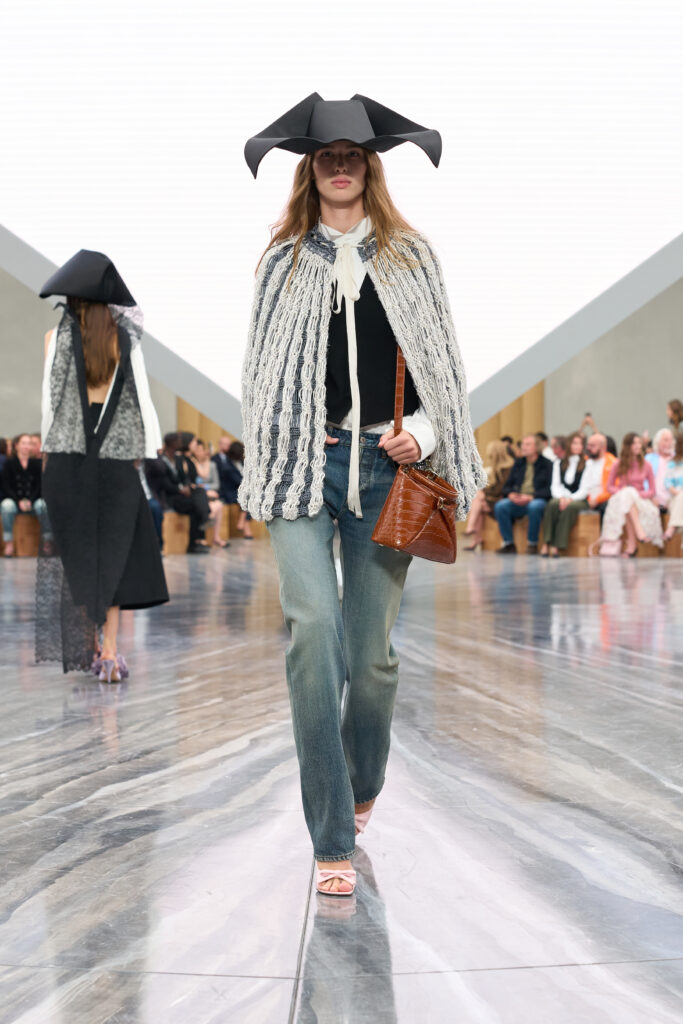
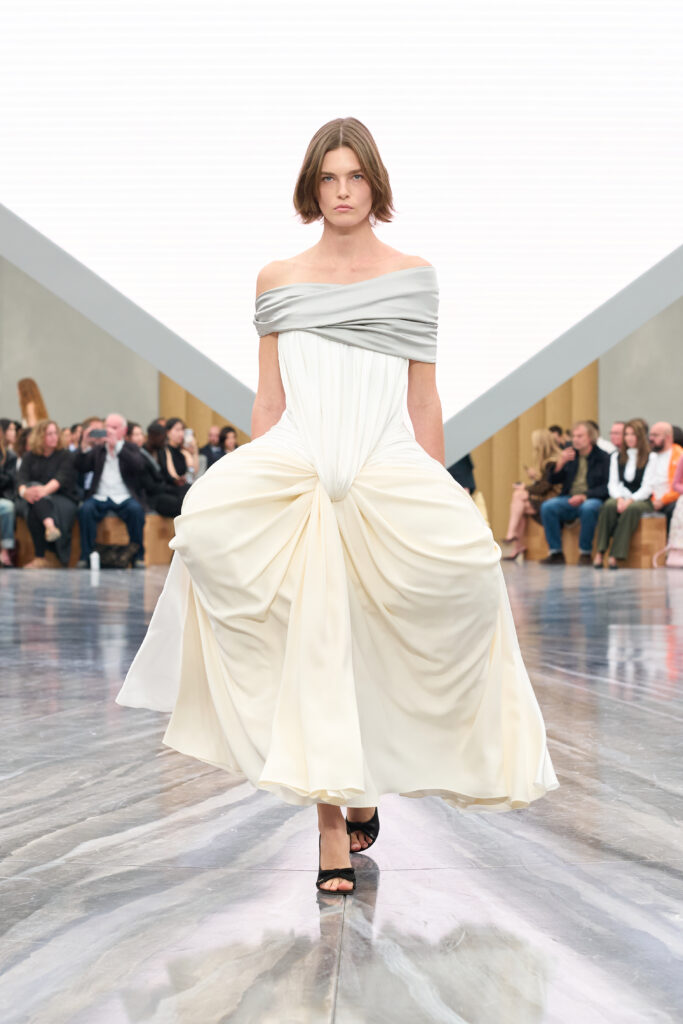
Millinery was a star player in this collection. For those unaware, before becoming a couturier, the founder began as a hat sketch artist. Throughout his time, and through the hands of his many successors, hats have remained a central part of the Dior wardrobe. Leaning on the talent of Stephen Jones, Anderson referenced Galliano’s trianon hats while adding military bicornes to center the headpieces.
His most prominent nod to Christian Dior himself may have been an obvious choice, but he lifted and translated the layering of the Junon couture dress into variations of wearable mini dresses—showcasing the discipline of designing for tribute rather than replica.
However, Anderson’s take on the past stretched far beyond 1946. Looking beyond the 20th century, he delved further into France’s history of fashion. Panniers from the 18th century appeared under gowns, crafting exaggerated hips; waistlines dropped with a wink to the 1920s; and capes nodded to aristocratic uniforms.
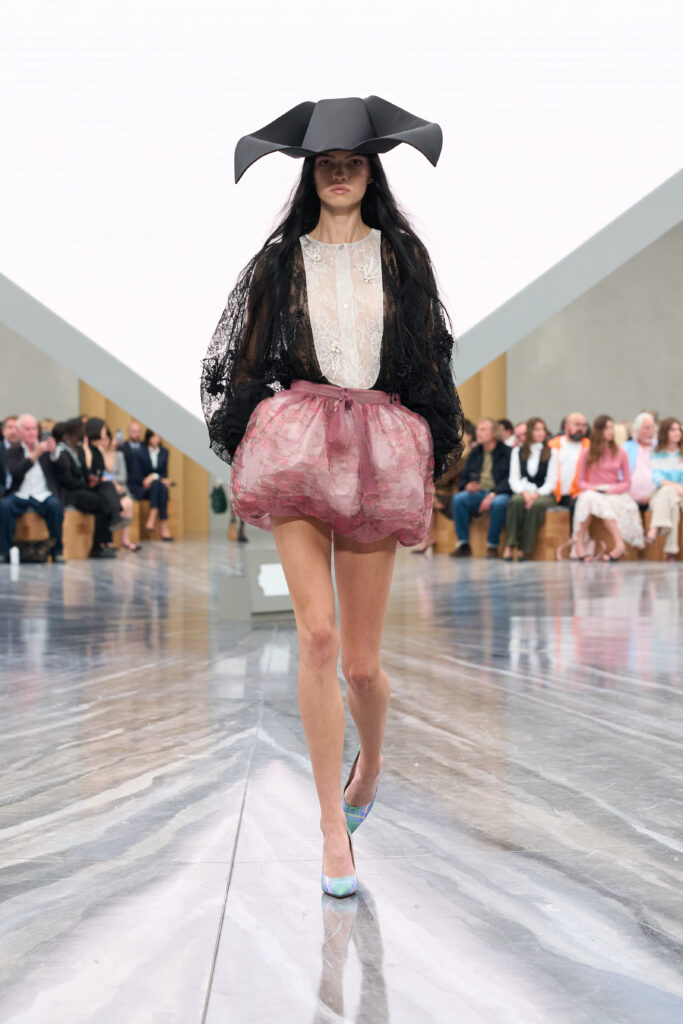
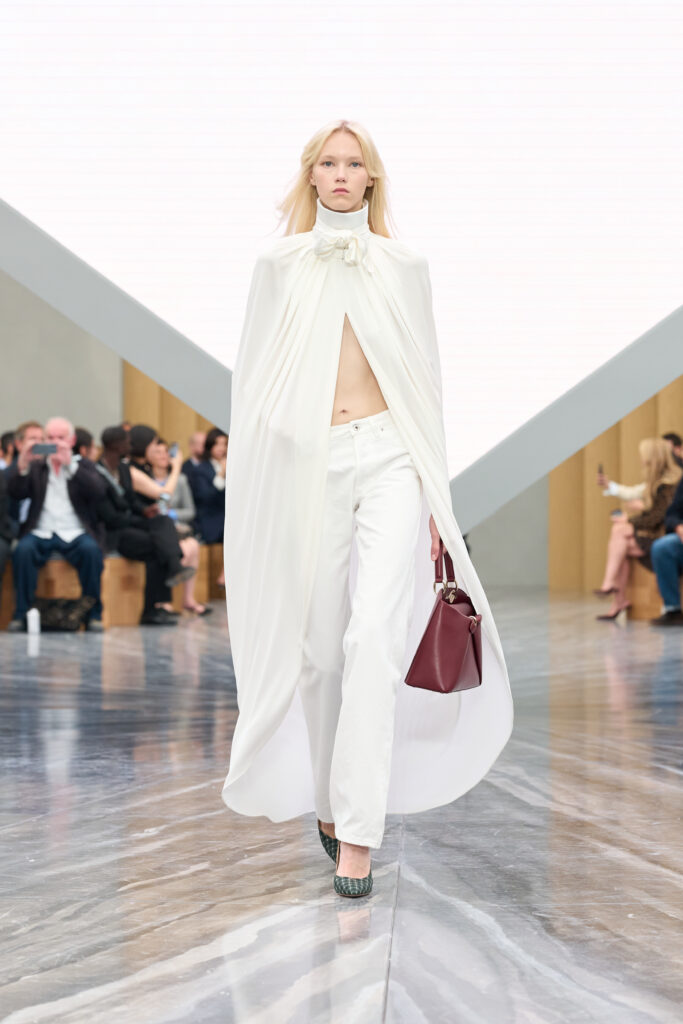
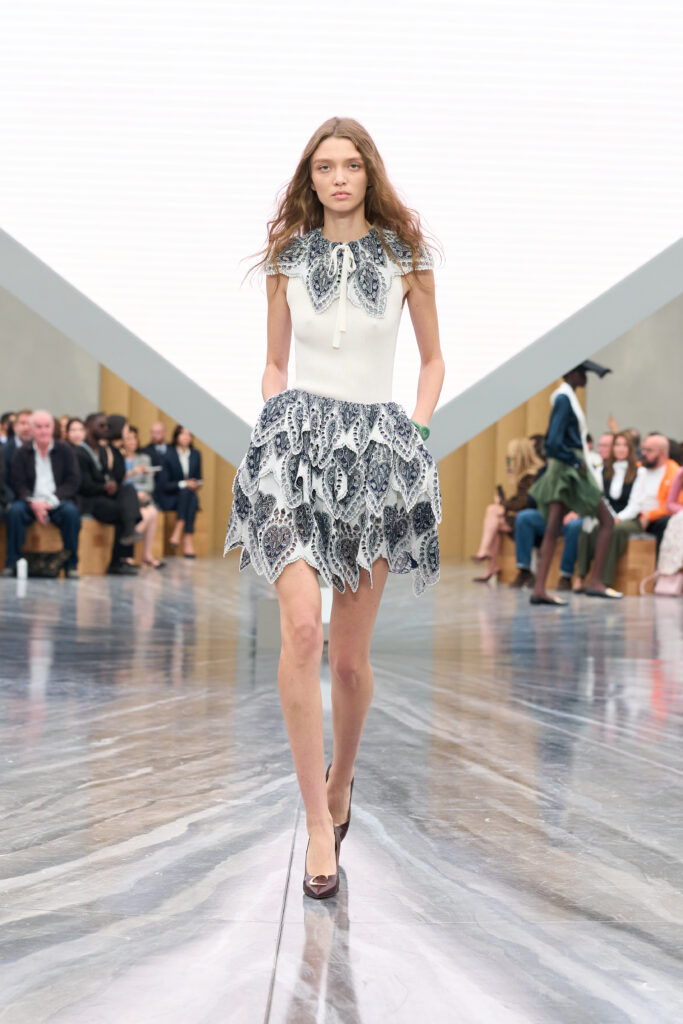
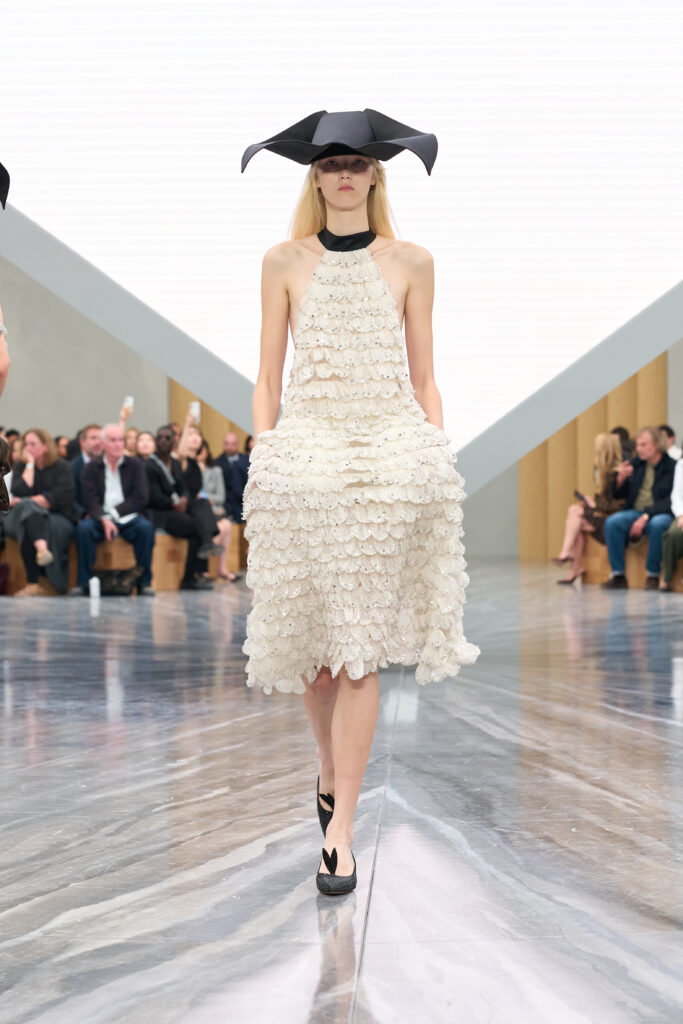
What may have been most surprising was the clear wearability of the looks. The French brand has a storied history of ostentatious drama and glamour, yet Anderson exercised restraint in favor of thoughtful decoration – feminine bows, delicate lace, subtle sequins – and far simpler proportions. At times, he even injected elements of androgyny through styling choices.
Anderson’s debut, at first sight, may have seemed like a radical break from what we have witnessed over the past decade. But when you look deeper, this collection is revealed as a thoughtful evolution, woven from every chapter of the archives. The show underpinned the very legacy once left open to manipulation and reinterpretation. Anderson’s choice of vocabulary for Spring/Summer 2026 made one thing clear: history cannot be repeated, but it is here to stay.
by Imogen Clark
